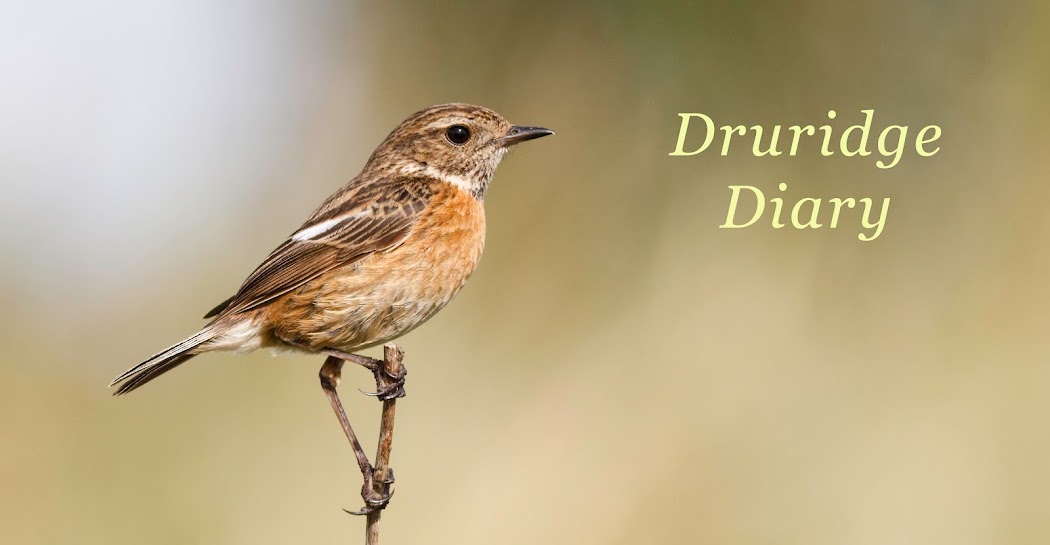This morning it was breezy from the south west with sunny spells, I had a walk to the north end of the patch, through the dunes north of the turning circle. The first bit north of the Dunbar burn is owned by the National Trust and the next area is owned by the local farmer. Both areas are grazed with the one to the north grazed much more heavily than the National Trust bit, basically cows are overwintered and supplementary fed on silage. This isn't ideal for dune flora as the feeding and dung enriches the dunes, but, for wintering birds, these dunes are a real mecca. The resultant plants, Mugwort, Fat Hen, Houndstooth and Redshank provide a huge seed resource for finches, buntings and tree sparrows. Additional arable weed seeds brought in with the silage supplement what grows.
The purist ecologist in me should be horrified, but diversity is everything and these 'wrecked' dunes play an important part in keeping these passerines fed when there is nothing in the surrounding farmland and that is why there are a hundred or so Twite here every winter.
 |
The weedy dunes with mugwort, redshank and fat hen
|
The birds numbers are already starting to pick up here with 30 Linnet, ten or more Reed Bunting, family parties of Stonechat, Whitethroat and Grey Partridge noted this morning. A single Sedge Warbler was certainly a migrant.
 |
Male Reed Bunting in the Fat Hen
|
 |
| Reed Bunting - This is the best Reed Bunting photo I have ever taken |
 |
A young Stonechat - one of a family part that included three juveniles
|
 |
He got his eye on this fly - still learning to feed I reckon
|
The highlight this morning wasn't the birds but the butterflies. As I walked through the dunes, Small Tortoiseshells lifted from everywhere I walked, they all looked really fresh so must have recently emerged, I reckon I saw at least 150 of them in those two areas of dunes alone. Red Admirals, also freshly emerged, were also conspicuous with at least 40 counted. A couple of Meadow Browns and Small Coppers were looking less fresh.
 |
One of over 150 Small Tortoisehells
|
 |
Red Admiral - one of about 40-50
|
I presume this is a local emergence but down on the beach, Small Tortoiseshells were flitting by me from headed inland from the sea.
 |
Onto the beach - it looked wet away to the north
 | A passing Herring Gull
|
|
There was nothing much of note on the sea and the Budge fields were quiet, save for a group of Dunlin and Ringed Plovers. It was too windy for macro photography and I managed one hover with the small camera.
 |
Hoverfly Helophilus pendulus
|
 |
This was growing in the one of the cattle feeding areas - It is a Coprinus (Ink Cap family) - I think possibly Coprinopsis narcotica which likes dunged areas.
|












No comments:
Post a Comment